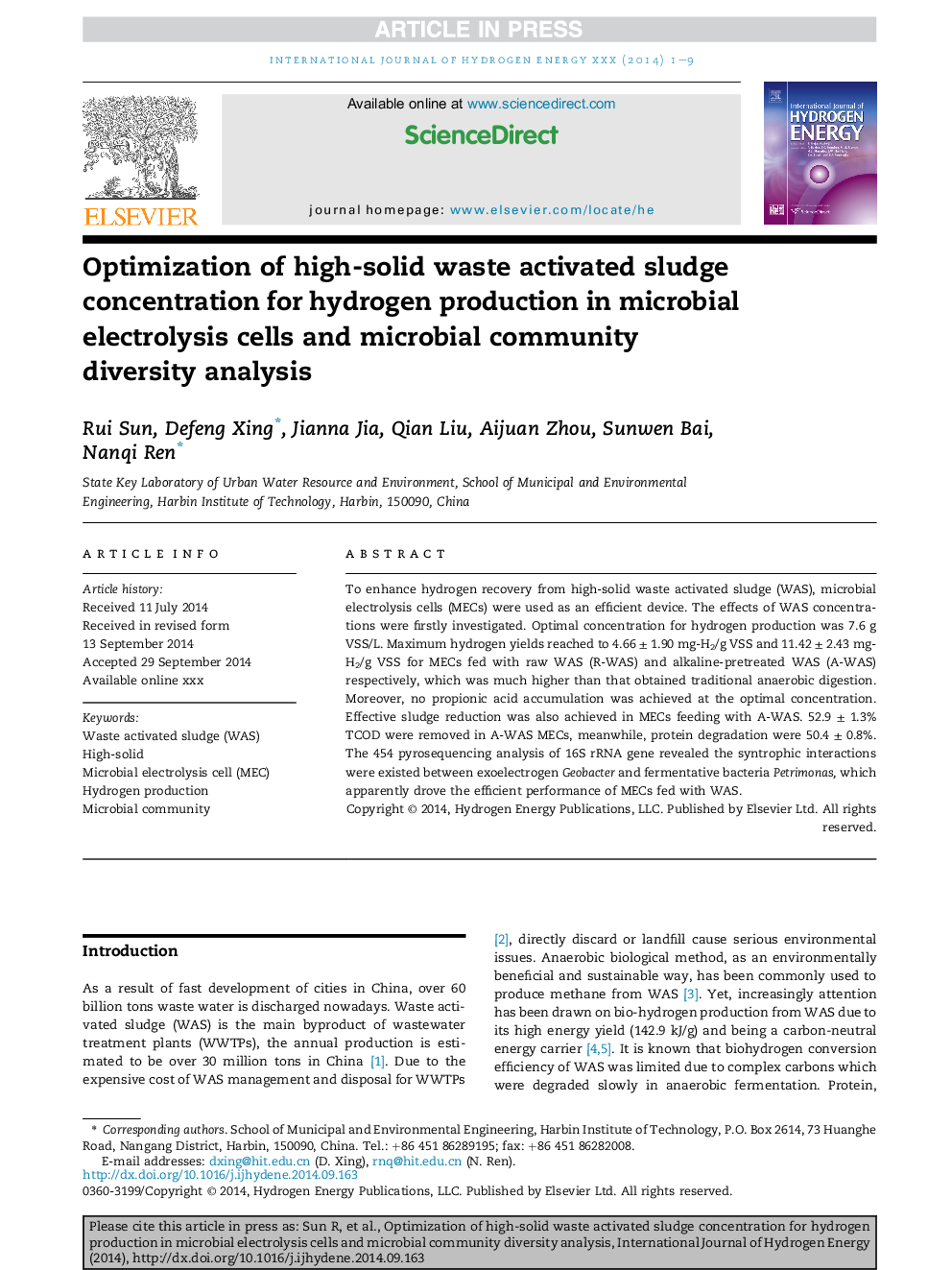| Article ID | Journal | Published Year | Pages | File Type |
|---|---|---|---|---|
| 7717165 | International Journal of Hydrogen Energy | 2014 | 9 Pages |
Abstract
To enhance hydrogen recovery from high-solid waste activated sludge (WAS), microbial electrolysis cells (MECs) were used as an efficient device. The effects of WAS concentrations were firstly investigated. Optimal concentration for hydrogen production was 7.6 g VSS/L. Maximum hydrogen yields reached to 4.66 ± 1.90 mg-H2/g VSS and 11.42 ± 2.43 mg-H2/g VSS for MECs fed with raw WAS (R-WAS) and alkaline-pretreated WAS (A-WAS) respectively, which was much higher than that obtained traditional anaerobic digestion. Moreover, no propionic acid accumulation was achieved at the optimal concentration. Effective sludge reduction was also achieved in MECs feeding with A-WAS. 52.9 ± 1.3% TCOD were removed in A-WAS MECs, meanwhile, protein degradation were 50.4 ± 0.8%. The 454 pyrosequencing analysis of 16S rRNA gene revealed the syntrophic interactions were existed between exoelectrogen Geobacter and fermentative bacteria Petrimonas, which apparently drove the efficient performance of MECs fed with WAS.
Keywords
Related Topics
Physical Sciences and Engineering
Chemistry
Electrochemistry
Authors
Rui Sun, Defeng Xing, Jianna Jia, Qian Liu, Aijuan Zhou, Sunwen Bai, Nanqi Ren,
